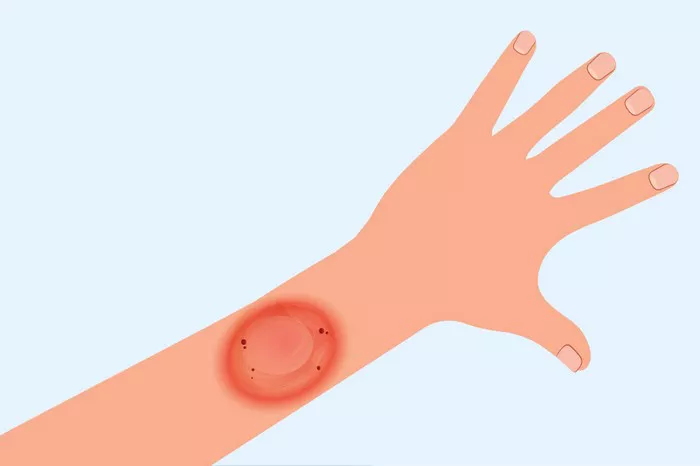Vitiligo, a skin condition characterized by the loss of pigment in certain areas of the skin, presents a myriad of challenges to those affected. Beyond the visible depigmentation, individuals often grapple with a lesser-known yet significant symptom: itching. The perplexing nature of itchiness in vitiligo warrants closer examination, as it not only adds to the discomfort experienced by patients but also raises questions about the underlying mechanisms at play. In this article, we delve into the complexities of itching in vitiligo, exploring its potential causes and implications for those living with the condition.
Understanding Vitiligo: A Brief Overview
Before delving into the intricacies of itching in vitiligo, it is essential to grasp the fundamentals of the condition itself. Vitiligo is characterized by the loss of melanocytes, the cells responsible for producing melanin, the pigment that gives skin its color. This loss of pigment results in the development of white patches on the skin, which can appear anywhere on the body. While the exact cause of vitiligo remains unclear, it is believed to involve a combination of genetic, autoimmune, and environmental factors.
The Itch Factor: Unraveling the Mystery
While vitiligo primarily affects the pigment-producing cells in the skin, the presence of itching adds another layer of complexity to the condition. Itchiness, or pruritus, is a common yet often overlooked symptom experienced by individuals with vitiligo. The sensation of itching can range from mild discomfort to intense irritation, significantly impacting the quality of life for those affected.
Potential Causes of Itching in Vitiligo
The precise reasons behind itching in vitiligo are not fully understood, but several theories have been proposed to explain this phenomenon:
1. Inflammation: Itching in vitiligo may be linked to underlying inflammation in the skin. Research suggests that individuals with vitiligo often have higher levels of inflammatory markers in their skin, which could contribute to the sensation of itchiness.
2. Nerve Sensitivity: Changes in nerve sensitivity may also play a role in itching associated with vitiligo. Alterations in nerve function or signaling pathways could heighten the perception of itchiness in affected areas of the skin.
3. Dryness and Irritation: The depigmented patches characteristic of vitiligo may be more prone to dryness and irritation, which can trigger itching. Factors such as exposure to harsh environmental conditions or excessive scratching may exacerbate this dryness and contribute to the sensation of itchiness.
4. Psychological Factors: Itching in vitiligo may also have psychological components. The visible changes to the skin caused by vitiligo can lead to feelings of self-consciousness, stress, and anxiety, which may in turn manifest as itching or exacerbate existing symptoms.
The Impact of Itching on Quality of Life
The presence of itching in vitiligo can have a profound impact on the physical and emotional well-being of affected individuals. Beyond the discomfort experienced, itching can disrupt sleep, impair concentration, and diminish overall quality of life. Furthermore, the visible scratching associated with itching can lead to skin damage, increased risk of infection, and further exacerbation of vitiligo symptoms.
Managing Itching in Vitiligo
Effective management of itching in vitiligo requires a multifaceted approach aimed at addressing both the underlying causes and the symptom itself. Some strategies for managing itching in vitiligo include:
1. Topical Treatments: Emollients and moisturizers can help alleviate dryness and irritation, reducing the likelihood of itching. Topical corticosteroids or calcineurin inhibitors may also be prescribed to reduce inflammation and relieve itching.
2. Avoiding Triggers: Identifying and avoiding triggers that exacerbate itching, such as harsh soaps, extreme temperatures, or tight clothing, can help minimize symptoms.
3. Stress Management: Techniques such as mindfulness, meditation, and relaxation exercises can help reduce stress and anxiety, potentially alleviating itching associated with psychological factors.
4. Medical Interventions: In cases where itching is severe or unresponsive to other treatments, medical interventions such as oral antihistamines or phototherapy may be considered.
5. Supportive Care: Seeking support from healthcare professionals, support groups, or mental health professionals can provide valuable guidance and emotional support for individuals coping with itching in vitiligo.
Conclusion
Itching in vitiligo represents a complex and multifaceted aspect of the condition, with potential implications for both physical and emotional well-being. While the exact mechanisms underlying itching in vitiligo remain elusive, a comprehensive understanding of the potential causes and management strategies can empower individuals to effectively cope with this challenging symptom. By addressing itching in vitiligo with a holistic approach that considers both the physical and psychological aspects of the condition, healthcare professionals can work towards improving the overall quality of life for those affected by this chronic skin disorder.
Related Topics:


























